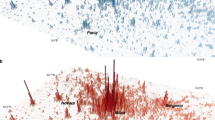Abstract
Geospatial data sciences have emerged as critical requirements for high-priority application solutions in diverse areas, including, but not limited to, the mitigation of natural and man-made disasters. Three sets of metrics, adopted or customized from geo-statistics, applied meteorology and signal processing, are tested in terms of their ability to evaluate geospatial datasets, specifically two population databases commonly used for disaster preparedness and consequence management. The two high-resolution, grid-based population datasets are the following: The LandScan dataset available from the Geographic Information Science and Technology (GIST) group at the Oak Ridge National Laboratory (ORNL), and the Gridded Population of the World (GPW) dataset available from the Center for International Earth Science Information Network (CIESIN) group at Columbia University. Case studies evaluate population data across the globe, specifically, the metropolitan areas of Washington DC, USA, Los-Angeles, USA, and Houston, USA, and London, UK, as well as the country of Iran. The geospatial metrics confirm that the two population datasets have significant differences, especially in the context of their utility for disaster readiness and mitigation. While this paper primarily focuses on grid based population datasets and disaster management applications, the sets of metrics developed here can be generalized to other geospatial datasets and applications. Future research needs to develop metrics for geospatial and temporal risks and associated uncertainties in the context of disaster management.




Similar content being viewed by others
References
Bhaduri, B., Bright, E., Coleman, P., & Dobson, J. (2002). LandScan: Locating people is what matters. Geoinformatics, 5(2), 34–37.
Bockarjova, M., Steenge, A. E., & van der Veen, A. (2004). On direct estimation of initial damage in the case of a major catastrophe: Derivation of the “basic equation”. Disaster Prevention and Management, 13(4), 330–336.
Box, G., Jenkins, G. M., & Reinsel, G. (1994). Time series analysis: Forecasting and control (3rd ed.). Prentice Hall.
Center for International Earth Science Information Network (CIESIN), Columbia University; and Centro Internacional de Agricultura Tropical (CIAT), 2004. Gridded Population of the World (GPW), Version 3. Palisades, NY: Columbia University. Available at http://sedac.ciesin.columbia.edu/gpw/global.jsp (Verified June 2007).
Chiles, J.-P., & Delfiner, P. (1999). Geostatistics: Modeling spatial uncertainty. Wiley.
Cressie, N. (1993). Statistics for spatial data. Wiley.
Deichmann, U. (1996). A Review of spatial population database design and modelling. National Center for Geographic Information and Analysis (NCGIA). Santa Barbara, CA, USA: University of California, Santa Barbara (UCSB).
Deichmann, U., Balk, D., & Yetman, G. (2001). Transforming population data for interdisciplinary usages: From census to grid. Unpublished manuscript available on-line at: http://sedac.ciesin.columbia.edu/plue/gpw/GPWdocumentation.pdf (Verified: June 2007).
Dilley, M., Chen, R. S., Deichmann, U., Lerner-Lam, A. L., Arnold, M., Agwe, J., Buys, P., Kjekstad, O., Lyon, B., & Yetman, G. (2005). Natural disaster hotspots: A Global risk analysis, The World Bank, 132 pp.
Dobson, J. E., Bright, E. A., Coleman, P. R., Durfee, R. C., & Worley, B. A. (2000). LandScan: A global population database for estimating populations at risk. Photogrammetric Engineering and Remote Sensing, 66(7), 849–857.
Draper, N. R., & Smith, H. (1998). Applied regression analysis. Wiley.
Fotheringham, A. S., Brundson, C., & Charlton, M. (2004). Some thoughts on inference in the analysis of spatial data. International Journal of Geographic Information Science, 18(5), 447–457.
Fotheringham, A. S., Brundson, C., & Charlton, M. (2000). Quantitative geography, perspectives on spatial data analysis. Sage.
Ganguly, A. R., & Bras, R. L. (2003). Distributed quantitative precipitation forecasting using information from radar and numerical weather prediction models. Journal of Hydrometeorology, 4, 1168–1180.
Ganguly, R. A., Protopopescu, V., & Sorokine, A. (2005). A bottom-up strategy for uncertainty quantification in complex geo-computational models. Proceedings of the GeoComputation 2005 Conference. Michigan: Ann Arbor.
Garb, J. L., Cromley, R. G., & Wait, R. B. (2007). Estimating populations at risk for disaster preparedness and response. Journal of Homeland Security and Emergency Management, 4(1), Article 3.
Mills, T. C. (1991). Time series techniques for economists. Cambridge University Press, 387 pp.
Murphy, A. H. (1993). What is a good forecast? An essay on the nature of goodness in weather forecasting. Weather Forecasting, 8, 281–293.
NRC [National Research Council] (2007). Tools and methods for estimating populations at risk from natural disasters and complex humanitarian crises. The National Academies Press, 248 pp.
O’Sullivan, D., & Unwin, D. (2003). Geographic information analysis. John Wiley.
Rabelo, L., Sepulveda, J., Compton, J., Moraga, R., & Turner, R. (2006). Disaster prevention and management for the NASA shuttle during lift-off. Disaster Prevention and Management, 15(2), 262–274.
Ripley. B. D. (2004). Spatial statistics. John Wiley and Sons.
Sabesan, A., Abercrombie, K. A., & Ganguly, A. R. (2006). Uncertainty estimates in population distribution models, Oak Ridge National Laboratory Technical Report 2006/540. U.S. Department of Energy.
Small, C. (2004). Global population distribution and urban land use in geophysical parameter space. Earth Interactions, 8, 1–18.
Stanski, H. R., Wilson, L. J., & Burrows, W. R. (1989). Survey of common verification methods in meteorology. World Weather Watch Tech. Rep. 8, WMO Tech. Doc. 358, World Meteorological Organization, 114 pp.
Acknowledgments
Funding support for developing the LandScan Global and LandScan USA databases is provided by several United States government agencies. The authors would like to thank Amy L. King and internal technical and editorial reviewers at Oak Ridge National Laboratory for their assistance. The proceedings have been co-authored by UT Battelle, LLC, under contract DE-AC05-00OR22725 with the U.S. Department of Energy. The United States Government retains, and the publisher by accepting the article for publication, acknowledges that the United States Government retains, a nonexclusive, paid-up, irrevocable, world-wide license to publish or reproduce the published form of this manuscript, or allow others to do so, for United States Government purposes.
Author information
Authors and Affiliations
Corresponding author
Additional information
The U. S. Government’s right to retain a non-exclusive, royalty-free license in and to any copyright is acknowledged.
Rights and permissions
About this article
Cite this article
Sabesan, A., Abercrombie, K., Ganguly, A.R. et al. Metrics for the comparative analysis of geospatial datasets with applications to high-resolution grid-based population data. GeoJournal 69, 81–91 (2007). https://doi.org/10.1007/s10708-007-9103-y
Published:
Issue Date:
DOI: https://doi.org/10.1007/s10708-007-9103-y




